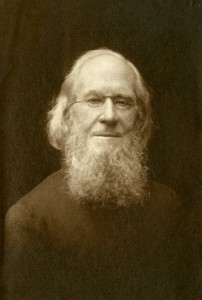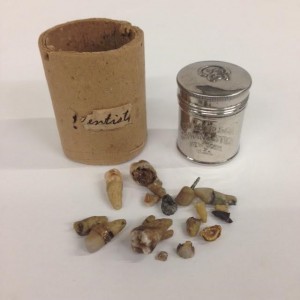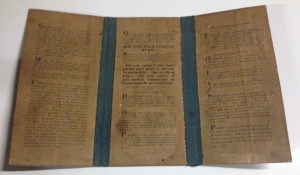
Author Katherine Santa Ana served as Graduate Library Pre-Professional (GLP), 2015-2017.
Since 1982, the Knights of Columbus Museum of New Haven, Connecticut has told the story of their fraternal organization’s history and Catholic heritage through the display of art and artifacts. From April 9th through September 18th of 2016, visitors can view “Mission of Faith: The Coming of the Gospel to America,” an exhibit featuring the missionaries who explored and evangelized the North American continent. The American Catholic History Research Center and University Archives here at The Catholic University of America contributed several objects to this exhibit, including mission tiles painted by the Sisters of Mercy in mid-19th century California, as well as items belonging to the intrepid Reverend Eli Washington John Lindesmith (1827 – 1922), a missionary and military chaplain stationed in the late 19th century at Fort Keogh, Montana. Check out the previous blog post, Sisters of Mercy Mission Tiles, for more details on the history and travels of our California mission artifacts.
This exhibit at the Knights of Columbus Museum gives us the opportunity to take a look at one of the Archives’ most dynamic and verbose characters, E.W.J. Lindesmith. As our History of the Museum Collection explains, he collected objects from the Sioux and Cheyenne, as well as preserved artifacts from his own life as a chaplain to soldiers of the Indian Wars (from altar stones and altar cards to his own extracted teeth!). With an eye to the future, he meticulously recorded his own stories and reflections to accompany each object.

One broken slate altar stone, currently on loan to the Knights of Columbus Museum exhibit, was given to Lindesmith by another Montana missionary. Why save a fragmented stone with a travel stained and ripped cover? According to Lindesmith:
“This stone was carried over many thousands of miles among whites, indians, soldiers, trappers, miners, explorers, and frontiersmen of every kind, on cars, boats, stages, and even muleback, and often afoot through almost impenetrable mountains, bluffs, coulees, rooks, canyons, forests, badlands, prairie and over rivers without bridges. — at all hours by day and night — not knowing at what minute they might fall into the hands of road agents or hostile indians by mistake.”
His reasoning for saving his pulled teeth is a bit briefer, but to the point: “I want to show the dentists some of their good work and some of their bad work.”
Perhaps the objects carried by Lindesmith for the longest time are his altar cards. These three simple cards are memory aids placed on the altar during mass for easy reference to prayers. Purchased in 1855, Lindesmith used them to practice celebrating mass as a seminary student and went on to utilize them for fifty-two years on all of his mission stations. Noting their stained and time-worn appearance, he explained: “Long ago I could have got better cards, but these were handy and I was attached to them and would not exchange them for the best that could be got.”

More of Lindesmith’s writings can be found in our digital exhibit showcasing his sermon notes on topics ranging from temperance to women’s rights, while additional biographic information is available in the finding aid to his personal papers. Through participating in the Knights of Columbus Museum’s exhibit, we hope to give a broader audience a glimpse into the vibrant life of this missionary, military chaplain, and frontiersman through the objects he carried.

One thought on “The Archivist’s Nook: A Montana Missionary – His Life and Teeth”
Comments are closed.